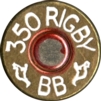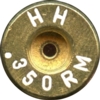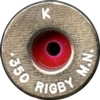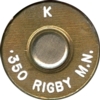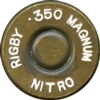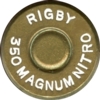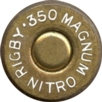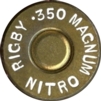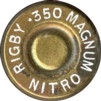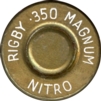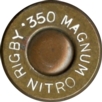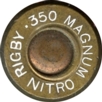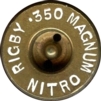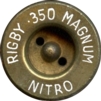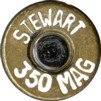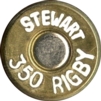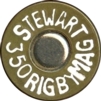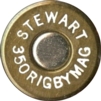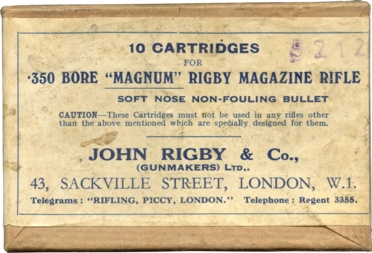The famous London gunmaking firm of John Rigby & Co introduced this proprietary cartridge in 1908. This was at a time when “medium bore” calibres were utilised all over the world for soft-skinned game as well as for occasional use on dangerous game in open country. Rigby had been at the forefront of innovative cartridge development several years previously with the introduction of the rimmed 400/.350. With the end of the second Anglo-Boer War in 1902, Rigby became Mausers British Agent; this collaboration with Mauser led to the use of the renowned square-bridge magnum-length action and a revolution in magazine rifles and the long rimless cartridges. No other maker then offered such a magnum-length bolt action rifle and Rigbys name became synonymous throughout the world for the best in Mauser-actioned big game rifles. Sporting cartridges of the day reflected the high velocities attained with the then new military rounds. 1905 saw the adoption of a 153 grain spitzer bullet for the Mauser Gewehr 98 at the unprecedented velocity of 2880 fps (in a 30 inch barrel) and, in 1906, the United States followed with the introduction of the 150 grain bullet at 2700 fps for the 1903 Springfield.

 To meet the challenge, the .350 Magnum Rigby replaced the faithful old 400/.350 which had been loaded with a 310 grain bullet at 2150 fps. The new cartridge used a .358-inch diameter bullet of 225 grains in semi-spitzer soft-nose and round-nose solid forms, both departing a 24 inch barrel at an advertised velocity of 2600 fps. In 1908, this was considered a remarkable velocity for the calibre. The advertised velocity was somewhat optimistic – actual testing of the loads gave a mean velocity of 2515 fps with an extreme spread of 38 fps. As was common practice at the time, a flanged version with identical ballistics, was also produced for use in doubles and was known as the .350 No 2 Rigby. This was however, nothing other than the old 400/.350 case with the same loading as the .350 Magnum. The new cartridge also used Rigbys steel jacketed bullets that gave true controlled expansion with the soft-nose while the solids exhibited excellent penetration with little or no deformation. The calibre began to be used on elephant, rhino and buffalo, although the makers neither advertised nor recommended it for such heavy game. With the exception of the .318 Westley Richards, which was significantly cheaper, Rigbys .350 Magnum became the most widely used medium bore throughout Africa. Rigbys introduction of the first Mauser magnum action and later the .350 Magnum spurred Holland and Holland to introduce their competing magnum, the great .375. (from SA Hunter)
To meet the challenge, the .350 Magnum Rigby replaced the faithful old 400/.350 which had been loaded with a 310 grain bullet at 2150 fps. The new cartridge used a .358-inch diameter bullet of 225 grains in semi-spitzer soft-nose and round-nose solid forms, both departing a 24 inch barrel at an advertised velocity of 2600 fps. In 1908, this was considered a remarkable velocity for the calibre. The advertised velocity was somewhat optimistic – actual testing of the loads gave a mean velocity of 2515 fps with an extreme spread of 38 fps. As was common practice at the time, a flanged version with identical ballistics, was also produced for use in doubles and was known as the .350 No 2 Rigby. This was however, nothing other than the old 400/.350 case with the same loading as the .350 Magnum. The new cartridge also used Rigbys steel jacketed bullets that gave true controlled expansion with the soft-nose while the solids exhibited excellent penetration with little or no deformation. The calibre began to be used on elephant, rhino and buffalo, although the makers neither advertised nor recommended it for such heavy game. With the exception of the .318 Westley Richards, which was significantly cheaper, Rigbys .350 Magnum became the most widely used medium bore throughout Africa. Rigbys introduction of the first Mauser magnum action and later the .350 Magnum spurred Holland and Holland to introduce their competing magnum, the great .375. (from SA Hunter)
